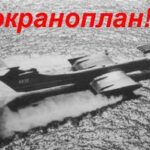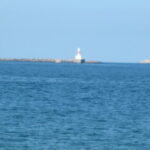Explain the prominence of Europe in the world today, including location, climate and physical resources, people and history.
The Location of Europe
Europe is bordered on the north by the Barents Sea, west by the Atlantic Ocean, and south by the Mediterranean Sea. The Alpine mountain system is the most outstanding physical feature; it dominates the south central portion of the continent and is the source of many major European rivers. The eastern land boundary is traditionally defined by a line following the Ural Mountians, southeast to the Caspian Sea, then across to the Black Sea through the Caucacasus Mountains, and cutting through the Bosporus, Sea of Marmara, and the Dardanelles. Actually, Europe is a large peninsula of the Eurasian landmass.
With peninsulas, bays, islands, and fjords give the southern, western, and northern areas of Europe very irregular coastlines. Consequently the coastline is unusually long for the total area and is estimated at 50,000 mi, longer than that of Africa. In Norway alone the north-south distance is about 1,100 mi, but the coastline, with its numerous fjords and around 150,000 islands, is nearly 12,500 mi long. Great Britain, Ireland, and Iceland are the major islands of Europe. The many smaller groups include the Orkneys, Shetlands, Faeroes, and the Channel Islands. All these islands, except Iceland and the Faeroes, are on the European continental shelf.
European Climate
Europe has four dominant types of climate: maritime in the west, continental in the east and north, Mediterranean in the south, and mountain in the highlands. The maritime climate has moderate temperatures in both summer and winter. The temperatures at La Coruna, in northwestern Spain, average 64 deg F in July and 50 deg F in January. This area also has a relatively long growing-season, except in its northern reaches in the British Isles and Norway. Precipitation of 20-40 inches is distributed evenly throughout the year, although the weather is subject to frequent changes. The winters in northwestern Europe are moderated by the warming effect of the North Atlantic Drift.
The continental climate is characterized by extreme differences between winter and summer temperatures. Temperatures in Moscow average 10 deg F in January and 60 deg F in July. A precipitation maximum occurs in summer with storms caused by convection of air that has been heated over the land. The growing season is short, and annual precipitation averages about 25 inches.
The regions on the Mediterranean coast have dry, hot summers (the average July temperature is 72 deg F) and cool to mild, rainy winters (the average January temperature is about 46 deg F). Rainfall averages from less than 30 inches in the lowlands to over 40 inches in the highlands. Highland areas, notably in the Alps and Caucasus, have a large ange of climatic conditions depending upon their height and orientation in relation to the prevailing winds. Generally, temperatures range from 25 deg F in January to 60 deg F in July. Rainfall averages from 20 inches in the hills to more than 80 inches in the mountains.
The climate of Europe, especially in the west, is far more moderate than that at the same latitude in eastern North America. This is due to the marine influences of the relatively warm waters of the North Atlantic Drift, which are brought on shore by the prevailing westerly winds. The major air pressure systems include the Icelandic Low, dominant in winter but influential all year, which is the origin of the cyclonic storms so important in the changing weather conditions in western and northern Europe. The Azores High, dominant in the summer, extends over southern Europe and is responsible for the hot, dry, stable weather of the Mediterranean region. The Siberian High, dominant in the winter, extends the cold, dry air of the interior of the Eurasian landmass over eastern and central Europe. The Southwest Asian Low, dominant during the summer, pulls the moist marine air from the Atlantic into Europe and furnishes the precipitation necessary for agricultural production. The Alps prevent much of this northern, moist air from entering the Mediterranean regions in the summer.
Resources
Europe is fortunate in possessing considerable amounts of two of the necessities of an industrialized society, namely, coal and iron ore. Even though, western Europe has traditionally had inadequate supplies of natural gas and petroleum. This situation is changing, however, with the development of North Sea oil and natural gas reserves. The continent’s hilly-to-mountainous terrain and reliable precipitation create a good hydroelectric power potential that is highly utilized in the Scandinavian countries as well as in and around the Alpine mountain system.
Coal deposits are widespread throughout Europe, with the exception of the Scandinavian and the Mediterranean countries. In 1990, Europe produced about one-fifth of the world’s anthracite and bituminous coal. The best-quality deposits are in the Rurh area of Germany, northern France, and southern Belgium; the Saar field on the French-German border; the flanks of the Pennine Chain Great Britain; the Silesian field of southern Poland and the Czech Republic; and in several areas of Russia and Ukraine. Low-quality brown coal, or lignite, is found in eastern and western Germany.
The major iron ore deposits are found in Lorraine in northeastern France, northern Sweden, Ukraine, and the southern Urals in Russia. With the exception of those in northern Sweden, iron ore and coal deposits are located near one another and relatively near population centers. Once the world’s foremost producer of iron ore, Europe by 1990 produced only one-fiftieth of world output.
Europe’s major areas for the production of oil and natural gas are the North Sea, the Russian fields around the Caspian Sea, and the northern plains of European Russia. Smaller fields are found in southwestern France, the Po Valley of Italy, in the Netherlands and Germany, and in Romania. Europe supplies only a small percentage of its own oil and natural gas needs, but that percentage increased as more of the British and Norwegian North Sea wells were brought into production. North Sea production peaked in 1990, but is expected to continue until at least 2015.
Two other minerals of major importance in Europe are bauxite, which is found in southern France, Croatia, Hungary, and the Urals; and potash, which is found in France, Germany, Spain, and Belarus. A variety of other minerals are mined, including copper, lead, zinc, ferro alloys, and precious metals such as gold and silver. Europe is fortunate in that much of its total mineral resources is located near industrial and population centers or is easily accessible by land and water transportation.
People of Europe
The diversity of ethnic groups in Europe is indicated by the large number of small political units. The number was increased still further in the wake of the collapse of the Communist regimes of Eastern Europe and the demise of the USSR. Russia, Ukraine, Belarus, and Moldova became independent, and several new states struggled to survive in the ruins of Yugoslavia. Most Europeans are classified as Caucasian, but there are major differences in color of skin, hair, and eyes. Light or fair pigmentation is dominant in northern Europe, while darker coloring is characteristic of the south.
Most of the languages of Europe fall into the Indo-European classification, the major groupings of which include the Germanic, Romance, and Slavic families. The Germanic group is found in Germany, Austria, Switzerland, the United Kingdom, the Netherlands, Belgium, Norway, Sweden, and Iceland. The Romance group is found in France, Spain and Portugal, Italy, southern Belgium, the western part of Switzerland, and Romania. Slavic languages dominate in eastern Europe and include Russian, Belorussian, Ukrainian, Czech, Slovak, Polish, Bulgarian, and Serbo-Croatian.
Greece has a Hellenic language; Albania, a Thraco-Illyrian. A Baltic language group exists east of the Baltic Sea. The Celtic language is found in Brittany in France and in the western parts of Wales, Ireland, and Scotland. The Basque language is spoken by a small group on the Spanish-French border. The non-Indo-European languages, found primarily in Hungary, Finland, and Estonia, belong to the Finno-Ugric group of Ural-Altaic Langauges; they probably reflect the movement of people out of the Ural Mountain region.
Europe is complex in history. Many tribe have settled this area. Historically, Europe has held an importance in the world that far exceeded its relative size and population. Many world social movements, economic systems, and political ideas have begun in Europe. The Renaissance, that had world changing effect, began in Europe. This produced many great scientific advancements. This made Europe the leader in science and technology. They had the first universities in the world. Every person who had the money to continue their education went to Europe.
In the 20th century, however, the continent suffered several setbacks. At the end of World War II the individual countries of Europe were greatly weakened economically, militarily, and politically. Moreover, during the cold war era, the continent was divided between the countries in the Soviet bloc and those aligned with the United States. The latter received massive economic aid through the Marshall Plan, and many of them entered the North Atlantic Treaty Organization (NATO;1949). Another factor that weakened European world-power status after World War II was the loss of colonial territories by the British, French, Dutch, Belgians, and later, the Portuguese.
The concept of economic union was implemented to offset the disadvantages of loss of resources and political and economic power by the individual European nations. The European Economic Community was formed in Western Europe in 1958. The goal was to pool resources, production, and labor into one large market by abolishing all customs barriers, and in general to promote European unity. The elimination of trade barriers has proceeded gradually over a period of decades. The European Community (EC) has provided the EEC nations with common political institutions, such as the European Parliament, which meets in Strasbourg, France, and the powerful European Commission, headquartered in Brussels. The eventual aim of the EC is the political unification of its member countries.






